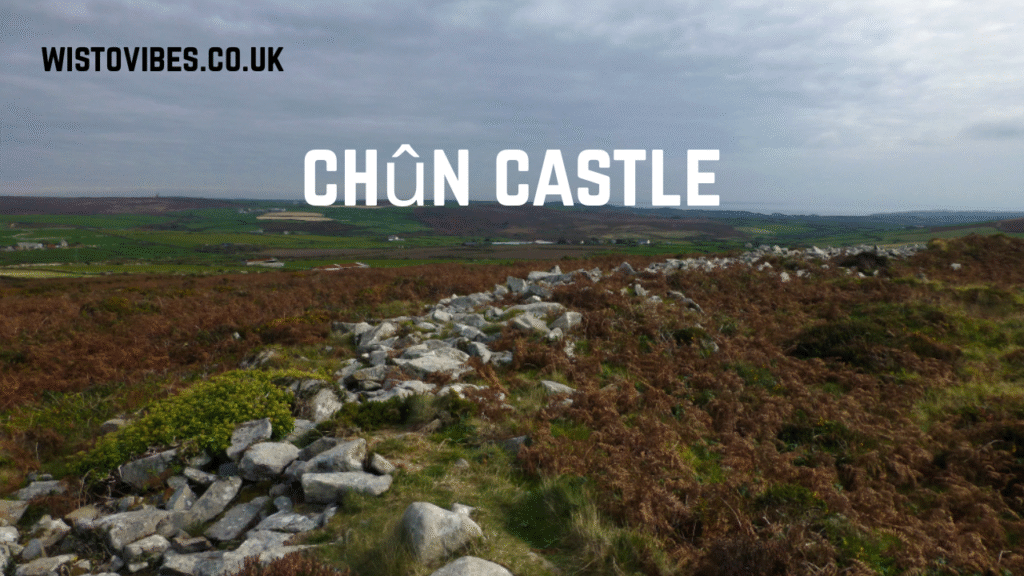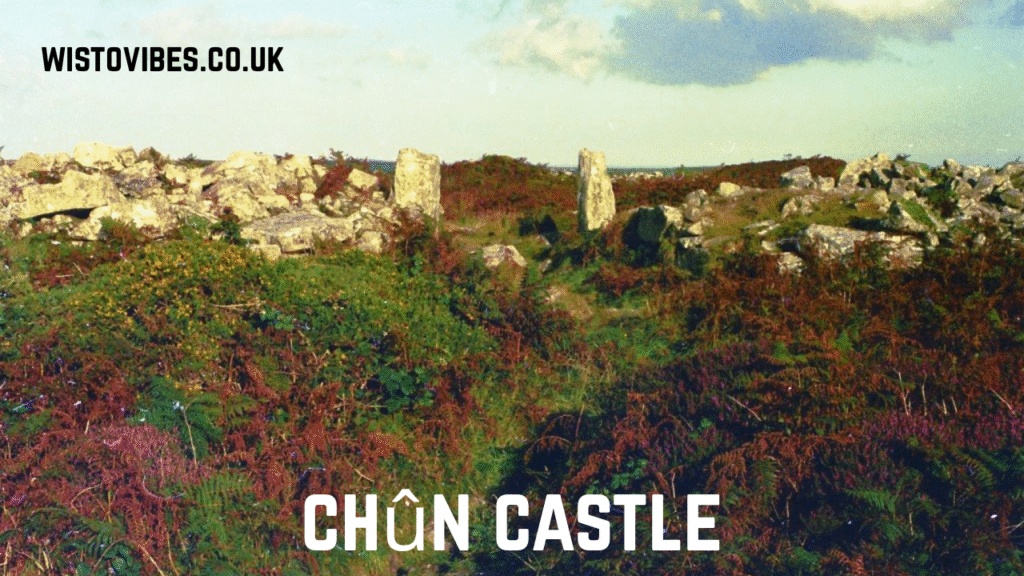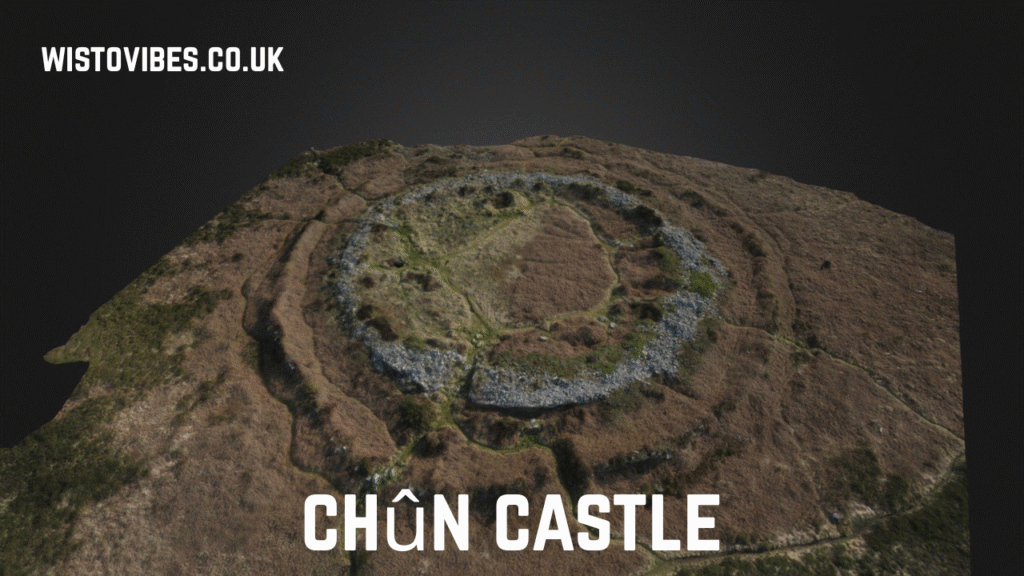Chûn Castle stands as one of Cornwall’s most remarkable and enduring ancient monuments, nestled on the rugged uplands of West Penwith. This Iron Age hillfort, with its imposing stone walls and commanding views of the surrounding countryside, has fascinated historians, archaeologists, and visitors for centuries. The castle is believed to have been constructed during the early centuries of the first millennium BC and has since played many roles in the region’s cultural and historical landscape. Its preservation today allows us to step back in time and imagine the daily lives, defensive strategies, and spiritual traditions of the communities who once lived there.
Historical Origins of Chûn Castle

The origins of Chûn Castle are deeply rooted in the Iron Age, a period when fortified settlements were an essential part of community life in Britain. Archaeological evidence suggests that the hillfort was built to protect local people from outside threats while also serving as a central place for trade, storage, and governance. The name “Chûn” is derived from the Cornish word “Chy an Woon,” which translates to “house on the downs,” reflecting both its location and its significance as a stronghold. Over time, the site likely evolved from a purely defensive structure into a more complex hub of social and economic activity.
The Strategic Location of Chûn Castle
One of the defining features of Chûn Castle is its location. Perched high above the granite-strewn landscape of West Cornwall, the fort provided a commanding view of the land and sea. This elevated position gave its inhabitants the ability to monitor movements across the countryside and coastline, a vital advantage during periods of conflict or uncertainty. The strategic siting also allowed for communication with other nearby hillforts and settlements, ensuring that the castle was an integral part of a larger defensive network across the region.
Architectural Features of Chûn Castle

The architecture of Chûn Castle reveals much about the engineering skills and determination of its builders. The site is enclosed by two massive stone ramparts, which once would have been topped with timber palisades, creating formidable defenses. Within the walls, evidence suggests the presence of circular huts, storage pits, and communal spaces where daily activities such as cooking, weaving, and tool-making would have taken place. Even though much of the site is now in ruins, the surviving structures continue to illustrate the ingenuity and resourcefulness of Iron Age communities.
Life Within the Castle Walls
Life inside Chûn Castle would have been a blend of domestic, economic, and defensive activities. Families likely lived in roundhouses constructed from timber and thatch, clustered around hearths that provided warmth and served as the center of household life. The community would have relied on farming, animal husbandry, and foraging, using the surrounding fertile lands for crops and livestock. The castle’s elevated position also meant that fresh water had to be managed carefully, with nearby springs and water collection methods ensuring survival during times of siege.
Defensive Importance of Chûn Castle
The defensive capabilities of Chûn Castle cannot be underestimated. Its double ramparts, combined with ditches and natural rocky terrain, created an almost impenetrable barrier to invading forces. Such fortifications would have deterred attackers and provided inhabitants with valuable time to organize resistance. The very act of constructing such monumental defenses suggests that the community faced genuine threats and invested heavily in protecting their way of life. This defensive role underscores the significance of Chûn Castle as both a physical and psychological stronghold in Iron Age Cornwall.
The Role of Chûn Castle in Trade and Economy

Beyond its defensive role, Chûn Castle likely functioned as a key hub for trade and economic exchange. Cornwall was renowned for its mineral resources, particularly tin, which was highly prized across ancient Europe. Chûn Castle’s position may have allowed its inhabitants to oversee and control aspects of this trade, facilitating exchanges of goods with distant regions. Artifacts discovered at the site, such as pottery and tools, suggest that the castle was part of a broader network of economic activity that connected Cornwall to the wider ancient world.
Spiritual and Ritual Aspects of Chûn Castle
Like many Iron Age hillforts, Chûn Castle may also have held spiritual or ritual significance. The nearby Chûn Quoit, a Neolithic dolmen situated close to the fort, hints at a long tradition of ceremonial use in the area. It is possible that the inhabitants of Chûn Castle engaged in rituals or ceremonies that connected them to their ancestors and the natural world. The enduring presence of such sacred monuments alongside the fort illustrates how daily life and spirituality were closely intertwined in Iron Age society.
Decline and Abandonment of Chûn Castle
Over time, the importance of Chûn Castle diminished, and the site was eventually abandoned. Changes in settlement patterns, the evolution of warfare, and shifting social structures may all have contributed to its decline. By the early medieval period, the castle was no longer used as a fortified settlement, although its ruins continued to loom large in the local landscape. The site became a silent witness to the passing of centuries, its once bustling community replaced by the whispers of the wind across the downs.
Archaeological Discoveries at Chûn Castle
Archaeological excavations at Chûn Castle have provided invaluable insights into its history and use. Excavators have uncovered pottery, tools, and evidence of domestic life that help reconstruct the daily experiences of its inhabitants. The ramparts themselves have also been carefully studied, revealing construction techniques that highlight the skill of Iron Age builders. Each discovery adds another layer of understanding, allowing modern researchers to piece together the complex story of this ancient monument.
Chûn Castle in Local Folklore
Chûn Castle has also played an important role in Cornish folklore and storytelling. Legends speak of giants, warriors, and hidden treasures associated with the site, reflecting the awe and mystery it has inspired across generations. Such tales not only enrich the cultural heritage of the region but also highlight how the castle has remained a powerful symbol of strength and endurance in local imagination. Folklore ensures that Chûn Castle continues to live on, not only as a historical ruin but also as a vibrant part of Cornwall’s identity.
Preservation Efforts and Modern Importance
Today, Chûn Castle is recognized as a scheduled ancient monument, protected under law to preserve its historical and cultural significance. Efforts to maintain and study the site ensure that future generations can continue to learn from and be inspired by its story. The preservation of Chûn Castle is not only about protecting stones and earthworks but also about safeguarding the collective memory of a community and its place in the broader narrative of human history.
Tourism and Visitor Experience
Chûn Castle is a popular destination for those seeking to explore Cornwall’s ancient past. Visitors are drawn not only by the history of the site but also by the stunning natural surroundings, which provide breathtaking views across the Penwith peninsula. Walking to the castle offers a sense of connection with the landscape, while standing within its ruined walls evokes a powerful sense of stepping back into another era. Tourism plays a vital role in keeping Chûn Castle alive, ensuring that its story continues to be told and appreciated.
Comparative Importance with Other Hillforts
When compared with other Iron Age hillforts in Britain, Chûn Castle stands out for its impressive preservation and unique setting. While many hillforts have been lost to development or erosion, Chûn Castle retains its monumental ramparts and clear layout. This makes it a particularly valuable site for understanding the broader Iron Age landscape. Its proximity to other prehistoric monuments also sets it apart, creating a cluster of heritage that reflects thousands of years of human activity in the region.
Cultural Significance of Chûn Castle
Beyond archaeology and tourism, Chûn Castle holds cultural significance as a symbol of Cornish resilience and identity. It serves as a reminder of the ingenuity and strength of communities who thrived in challenging environments. For modern Cornish people, it represents a tangible link to their ancestors, fostering pride in a heritage that stretches back millennia. The castle thus continues to shape cultural identity in ways that go far beyond its ancient origins.
Chûn Castle and the Landscape of Cornwall
The surrounding landscape of Chûn Castle is as important as the monument itself. The windswept downs, granite outcrops, and panoramic views all contribute to the experience of the site. The castle’s placement within this environment was deliberate, designed to maximize its defensive and symbolic power. Today, this landscape also offers a sense of tranquility and connection to nature, enhancing the castle’s enduring appeal.
Symbolism of Strength and Survival
Chûn Castle stands as a symbol of strength and survival, embodying the determination of Iron Age communities to endure and thrive in a challenging world. Its monumental ramparts, enduring presence, and continued relevance all testify to the resilience of the human spirit. The castle has survived centuries of change, yet its story remains vibrant and meaningful. This symbolism ensures that Chûn Castle will continue to inspire and captivate those who encounter it.
Modern Research and Future Discoveries
Ongoing research at Chûn Castle holds the potential for even more discoveries in the future. Advances in archaeological technology, such as remote sensing and environmental analysis, may reveal new aspects of the site that have yet to be understood. Each layer of soil and stone carries the possibility of unlocking fresh insights into Iron Age life. The continued study of Chûn Castle ensures that it remains a living subject of exploration, rather than simply a relic of the past.
The Enduring Appeal of Chûn Castle
Ultimately, the enduring appeal of Chûn Castle lies in its ability to bridge the gap between past and present. It offers visitors and researchers alike a rare opportunity to step into the world of Iron Age Cornwall, to imagine lives lived long ago, and to appreciate the resilience and creativity of ancient communities. Its combination of history, landscape, and cultural significance makes Chûn Castle an irreplaceable treasure in the story of Britain’s heritage.
Conclusion and FAQs
Chûn Castle is more than just an ancient ruin; it is a monument that continues to inspire curiosity, pride, and wonder. From its origins as a defensive hillfort to its role in trade, ritual, and folklore, the site embodies the richness of Cornish history. Its preservation today allows future generations to engage with this remarkable heritage and to reflect on the enduring human need for community, security, and connection to the land.
FAQs
What is Chûn Castle?
Chûn Castle is an Iron Age hillfort in West Cornwall, built with massive stone ramparts and used as a defensive and community settlement.
When was Chûn Castle built?
The castle dates back to the early centuries of the first millennium BC, during the Iron Age.
What was Chûn Castle used for?
It served defensive, domestic, economic, and possibly ritual purposes, acting as both a fortress and a community hub.
Can visitors explore Chûn Castle today?
Yes, the site is open to visitors and offers both historical interest and stunning natural views.
Why is Chûn Castle important?
It is a well-preserved example of an Iron Age hillfort, significant for its history, cultural symbolism, and connection to Cornwall’s heritage.
Read More: The Mystery and Legacy of St Govor’s Well History Legends and Cultural Significance




